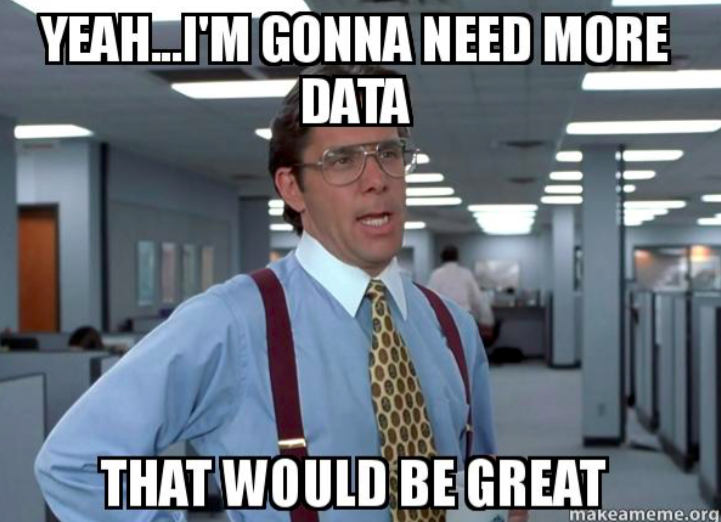The 2018 Gallagher Benefits Strategy & Benchmarking Survey
 As HR and business professionals, you know that one of the best tools to have is data. And when it comes time to make a decision, having the right, current data is of key importance. This week, I attended a fascinating session about benchmarking data analytics at HR Florida. Nicole Negvesky from Arthur J. Gallagher & Co. shared many of the results from the Gallagher 2018 survey on benchmarking operational priorities, total rewards strategies and employer strategic insights. The survey was conducted January- April 2018, with 4,241 participating organizations and more than 300 questions covering the total rewards spectrum.
As HR and business professionals, you know that one of the best tools to have is data. And when it comes time to make a decision, having the right, current data is of key importance. This week, I attended a fascinating session about benchmarking data analytics at HR Florida. Nicole Negvesky from Arthur J. Gallagher & Co. shared many of the results from the Gallagher 2018 survey on benchmarking operational priorities, total rewards strategies and employer strategic insights. The survey was conducted January- April 2018, with 4,241 participating organizations and more than 300 questions covering the total rewards spectrum.If you’re like me, anytime you attend an analytics session, there is this underlying feeling of dread about the volume of data that you’re about to consume. In this session, Nicole was able to condense the results down to a consumable amount, then relate the responses back to the workplace. There is also some thought of whether the data will tell you that your organization is on track with decisions and direction, or if you’re not. The most interesting responses for me fell into three categories: Innovating in benefits, wellbeing, and employee communications.
Innovating in benefits– Why is this important? Well, according to the survey, 51% see compensation and benefits as a tool for attraction and retention. While this number seems low to me, it’s clear there is direction to do better benefit planning and offers to drive retention. To that end, 44% of respondent companies have a strategy to manage healthcare costs for their organizations.
Companies are embracing innovative benefits such as infertility treatment (89%), stand-alone vision plans (74%), Employee Assistance Programs (70%), bariatric surgery (65%), and Gender Reassignment Surgery (35%). While some like vision and EAP are not surprising, some of the others are good to see as perks and benefits that are entering the strategic plans of organizations. Adding new, sometimes controversial benefit offerings is certainly a way to demonstrate innovation in benefit planning strategies.
Wellbeing-One of the biggest trends in benefit strategy and offering is solutions around wellbeing. Wellbeing goes beyond the wellness approaches of the past 10 years, or so. Wellbeing includes medical, emotional, social, financial and career. When asked, only 52% of respondents believe they have an effective wellbeing strategy.
Employee Communications- As an area I’ve been passionate about most of my career, it was disheartening to see that only 13% of the respondents say their organizations have a comprehensive employee communication plan. This is something that takes time to create, but should not be complex to do. I’ve written about tips several time in “How to Create A Killer Communication Plan” and “4 Steps to Build Communication Bridges”.
How to use data?
Now that you have some of the information, go back and do an assessment of your own organizational approach to these areas.
- Are you strong in your benefits planning strategy? If not, identify areas where you are underperforming or places you know you can make adjustments to increase the benefits for employees, reduce costs for the company, or hopefully, both.
- Don’t have a solid wellbeing plan in place? Look to the survey for some of the innovative benefits and perks that could positively impact your workforce.
- Don’t have a communication plan? Ask your marketing team for help. Although primarily focused on external messaging, they are always a good source of learning when it comes to how to communicate internally as well.


One Comment
Thanks for the great read! I, too, am surprised by how low the percentage of respondents companies’ say their organizations have a comprehensive employee communication plan. I am curious as to why it is so low. Could it be the amount of time and effort it takes to plan, is overwhelming for managers? Or is it because some organizations do not implement their employee communication plans? I think as a society, we are more in-tuned to social media and the internet, that a lot of organizations have turned away from the traditional forms of communication such as phone calls and mail. As for the new innovative benefits companies are offering, I agree with you, creating benefits that stem from controversial topics expresses courage and valor. Companies are being inclusive to all people and their needs.